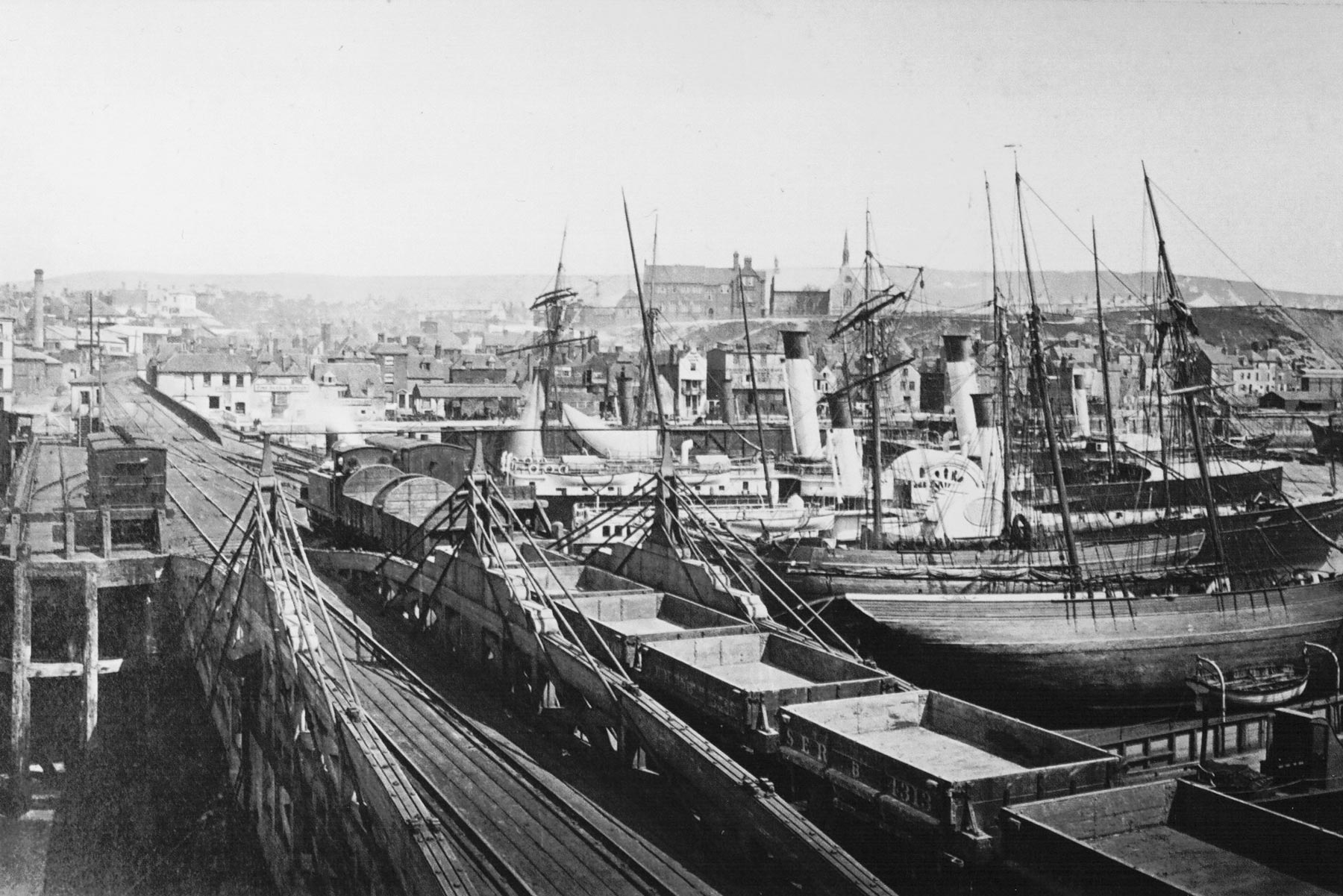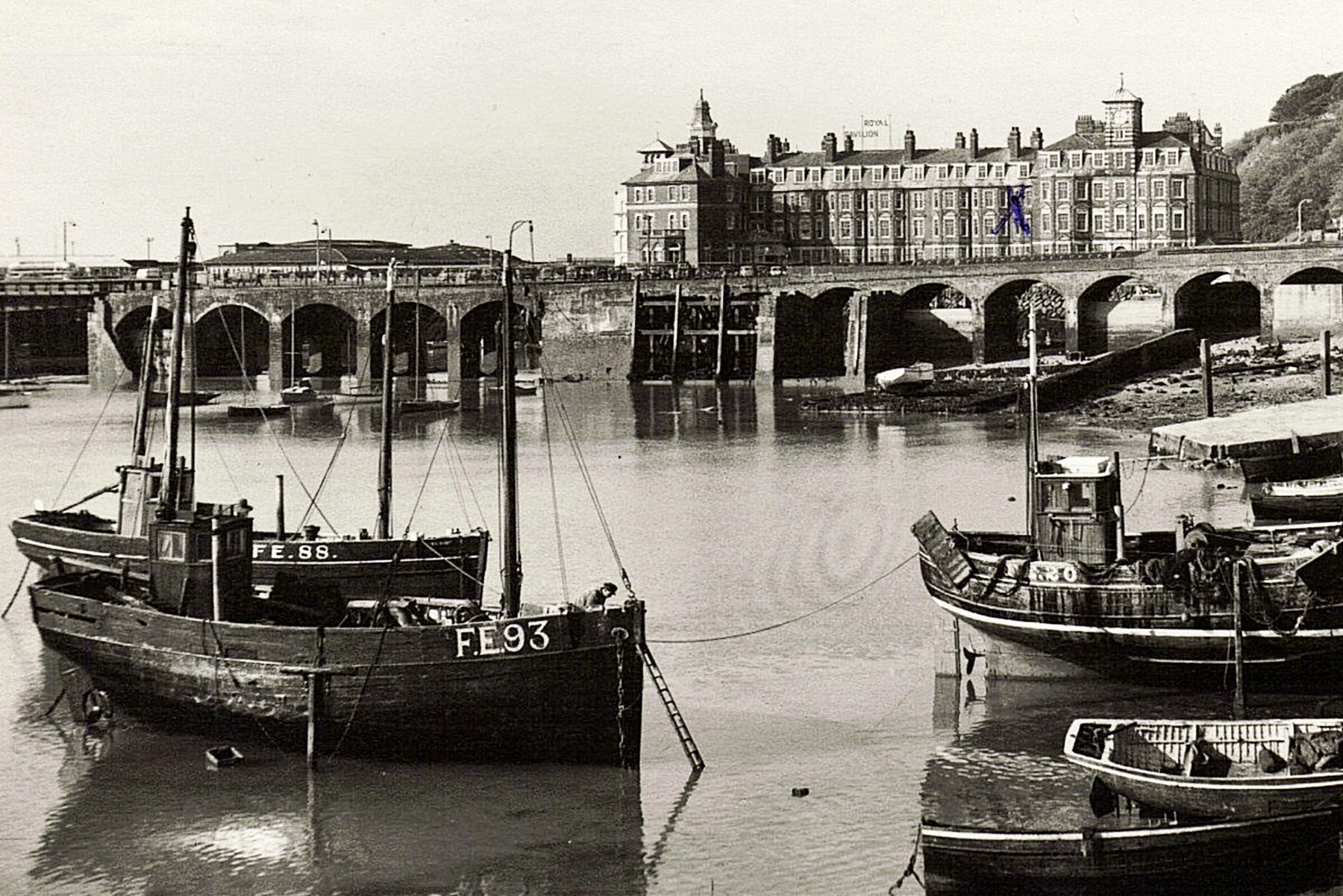From fishing harbour to international port
The construction of the railway branch line in 1843 completely changed the fortunes of Folkestone. The viaduct over the harbour and station on the pier followed. These developments catapulted the town from a quiet fishing harbour to international port. Built by the South Eastern Railway Company, the new line brought trains from the main line directly to the quayside. Goods could be efficiently transferred to or from waiting boats, and passengers travelling to the continent could stroll straight onto waiting ferries.

bridging the gap
After making its way down the steep 1:30 incline to the harbour, the line carried on over the water to the south quay and pier on 13 red-brick arches. The pier is now called the ‘Harbour Arm’. The most northerly arch on the viaduct is hidden by the jetty access slip. The viaduct was designed by William Cubitt, Chief Engineer of the line. Cubitt also designed the spectacular Foord Valley Viaduct on the main line (also Grade II listed) that dominates the town. Originally the viaduct carried two tracks and on either side were parallel timber freight jetties.
A wooden Swing Bridge connecting the Viaduct across the 150-foot gap to the south pier was completed in 1847. The Viaduct and bridge divided the harbour into ‘inner’ to the west and ‘outer’ to the east. But, with the addition of the Swing Bridge, this allowed taller boats in and out of the inner harbour when pivoted. Rails were not laid across the bridge until 1848 and the first passenger train reaching the harbour station on 1st of January 1849. The Folkestone Harbour station opened in 1850 after rails were laid across the swing bridge. Until then the line was largely used to transport coal.
In its first decades, Folkestone provided the most popular cross-Channel route. It was overtaken by the slightly shorter Dover-Calais crossing in the late 1860s.
Photography courtesy of Alan F. Taylor, Folkestone & District Local History Society
